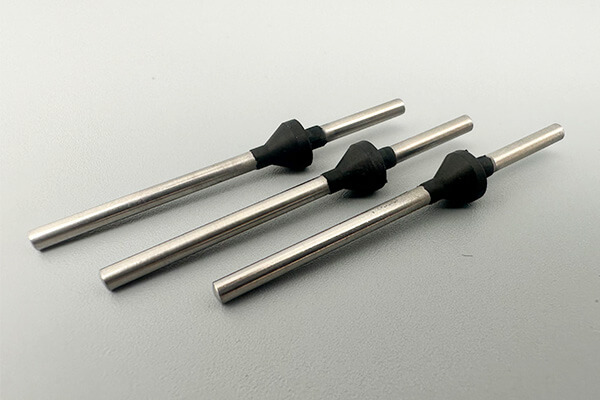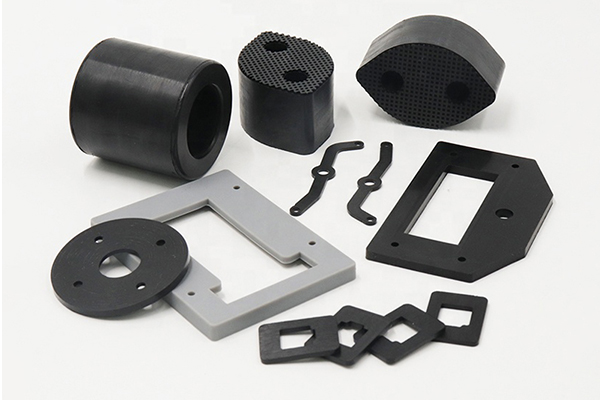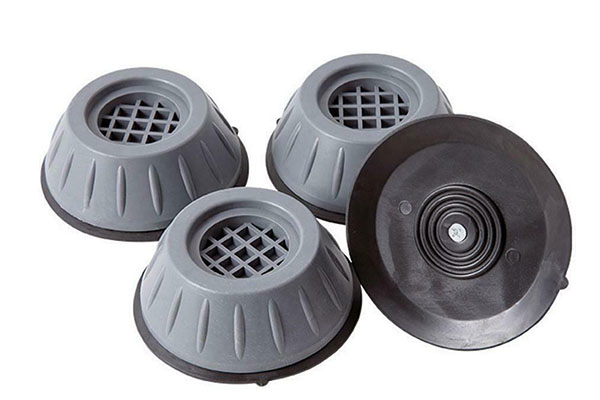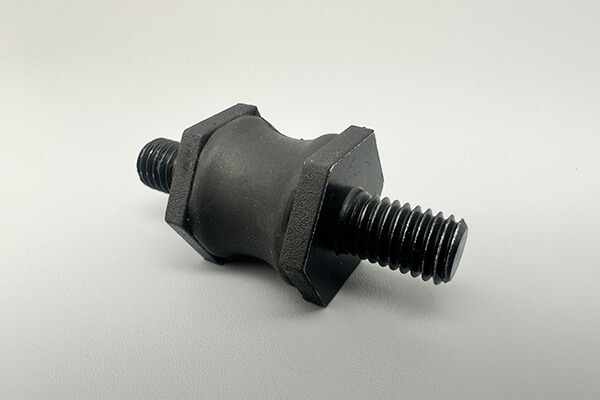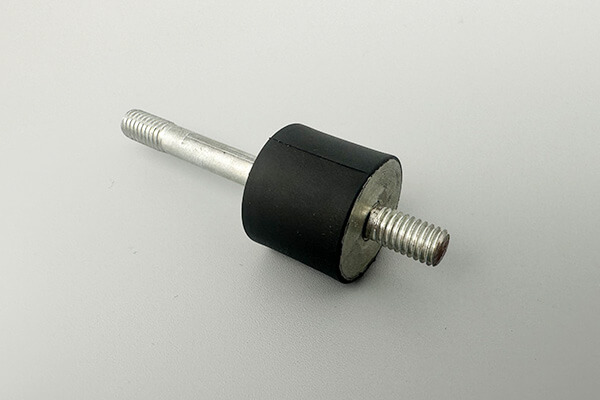Rubber Injection Molding: How to Customize Your Rubber Molded Parts
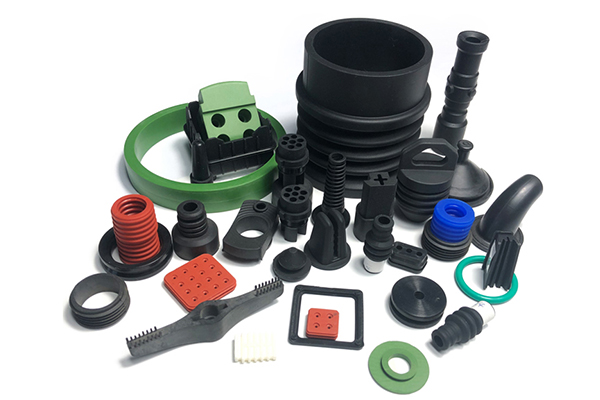
Rubber Injection Molding Overview
Rubber injection molding is a manufacturing process where rubber is injected directly from a barrel into a mold for vulcanization. This method utilizes the pressure from an injection machine to inject preheated rubber through a nozzle into the mold cavity for shaping, vulcanization, and solidification.
The importance of rubber injection molding is that it can produce high-quality, high-precision, high-reliability rubber products, and has high production efficiency and short production cycle. It is widely used in the production of various rubber products such as sealing rings, rubber tubes, rubber pads, etc. in the fields of automobiles, electronics, medical equipment, and household appliances.
Advantages and disadvantages of rubber injection molding
Compared with traditional rubber processing methods, rubber injection molding has the following advantages: it can produce rubber products with complex shapes; it can realize mass production and improve production efficiency; it can reduce waste and loss; it can reduce labor costs.
Advantages of rubber injection molding
- 1. High precision: Rubber injection molding can manufacture high-precision and complex products, such as O-rings, sealing rings, keyboards, etc.
- 2. High efficiency: Compared with traditional rubber manufacturing methods, rubber injection molding has higher production efficiency and can produce products of the same quality in large quantities.
- 3. High degree of design freedom: rubber injection molding can produce various complex rubber products, because the mold can be designed into various shapes and sizes.
- 4. Good physical properties: rubber injection molding products have excellent physical properties, such as elasticity, wear resistance, anti-aging, etc.
- 5. Saving raw materials: Compared with traditional manual molding and other methods, rubber injection molding can reduce the waste and loss of raw materials and improve the utilization rate of raw materials.
- 6. Multifunctional: Rubber injection molding can produce rubber products of various shapes, sizes, colors, and hardnesses. At the same time, different fillers, colorants, etc. can be added to enhance the performance of rubber.
Disadvantages of rubber injection molding
- 1. High initial cost: Rubber injection molding needs to invest in equipment and customized molds, which is expensive.
- 2. Material selection is limited: not applicable to all materials: rubber injection molding is suitable for some specific rubber materials, and for some materials that are not suitable for injection molding, other manufacturing processes are required.
- 3. Not suitable for the production of small batches: rubber products produced by rubber injection molding usually require mass production, and are not suitable for the production of small batches of rubber products.
- 4. Difficult to maintain and clean: The rubber injection molding process will produce a lot of rubber debris and waste, which need to be cleaned and disposed of, otherwise it will easily lead to environmental pollution.
Types of rubber injection molding
According to the diversification of processing technology, rubber molding can be divided into rubber injection molding, hot pressing injection molding, extrusion injection molding and transfer molding.
Rubber Injection Molding (Rubber Injection Molding)
Put the heated rubber into the injection machine, and then inject the rubber into the mold through high pressure to form the desired product. This method is suitable for the manufacture of products with high precision, large size and thin wall thickness.
Compression Molding
Put the heated rubber block into the mold, then press and heat. The rubber injection molding method is ideal for producing large quantities of relatively uncomplicated products on a large scale.
Extrusion Molding (Extrusion Molding)
The heated rubber is extruded through the screw of the extruder, and then cut. The rubber injection molding method is well-suited for producing products with a small cross-sectional area and a high degree of continuity.
Common rubber injection molding raw materials
Commonly used rubber injection molding raw materials include styrene-butadiene rubber, nitrile rubber, silicone rubber, etc.
Styrene-butadiene rubber is a kind of synthetic rubber with good oil resistance, abrasion resistance, heat resistance and cold resistance, and is widely used in automobile tires, seals, rubber tubes, tapes and other fields.
Nitrile rubber is a type of synthetic rubber that exhibits properties such as resistance to oil, fuel, solvents, acids, alkalis, and more. It is widely used in automotive oil pipes, oil seals, hydraulic seals and other fields.
Silicone rubber is a special synthetic rubber with high temperature oxidation resistance, good electrical insulation, and biological inertness. It is widely used in food, medical, electronics and other fields.
How to choose the material?
When selecting raw materials for rubber injection molding production, it is necessary to comprehensively consider factors such as product use, working environment, physical properties, chemical properties, cost and processing performance.
- Product use and working environment: Different product uses and working environments require the selection of different raw materials. For example, products that need oil resistance and wear resistance need to choose styrene-butadiene rubber; products that need solvent resistance and acid and alkali resistance need to choose nitrile rubber; products that need high temperature and oxidation resistance need to choose silicone rubber.
- Physical properties of materials: including hardness, tensile strength, elongation at break, etc. Different products require different physical properties, and corresponding materials need to be selected.
- Chemical properties of materials: including chemical stability, chemical reactivity, etc. It is necessary to select a material that can have good chemical stability in a specific environment.
- Cost and processability: The cost of raw materials and processability also need to be considered. Some high-performance raw materials cost more, but can meet special requirements; while some lower-cost raw materials have better processing performance and can be processed more conveniently.
Rubber injection mold design and manufacture
Rubber injection mold is a key tool for the production of rubber products, and its design and manufacture have an important impact on the production process and product quality. The design and manufacture of rubber injection molds need to consider many factors, including material selection, structural design, processing accuracy, debugging and maintenance, etc. Only when comprehensive consideration is done can high-quality rubber products be produced.
Mold Material selection
Mold manufacturing needs to use high-quality materials, and the materials usually used are high-quality steel, alloy steel and tool steel. Selecting the appropriate material can enhance the hardness, wear resistance, and lifespan of the mold.
Mold structure design
The structure of the rubber injection mold should take into account the production process and product requirements, such as the model of the injection molding machine, production capacity and injection molding process. The structure of the mold should be reasonable and compact to ensure production efficiency and product quality.
Mold Building
Mold processing requires high precision and complex processes, and high-precision processing technologies such as CNC machine tools and EDM are usually used. The requirements of machining accuracy are directly related to the dimensional accuracy and surface quality of the product.
Mold debugging
Before the official production, the mold needs to be strictly debugged and inspected. Debugging includes the adjustment of injection molding process parameters and mold trial and other links. Only after strict debugging and inspection can the product quality and production efficiency be guaranteed.
Mold maintenance
Maintaining the mold is essential for ensuring production efficiency and product quality. It is necessary to carry out regular mold cleaning, repair and maintenance work to avoid mold wear and failure and prolong the service life of the mold.
Rubber Injection Molding Process
Rubber injection molding is also a kind of injection molding, which is a process of injecting heated and molten rubber material into the mold, and then cooling and forming. Rubber injection molding is an efficient and accurate molding process suitable for producing high-volume rubber products. Generally, from material preparation to rubber molding, the process is as follows:
Raw material preparation
Rubber injection molding requires the use of rubber materials, usually pre-mixed rubber particles and additives. During the injection molding process, raw materials are heated and melted to make them more fluid.
Mold opening preparation
The mold should be preheated first to ensure that the temperature reaches the appropriate injection temperature. Molds must be completely dry to prevent moisture or other contaminants from entering the molded product.
Feeding and injection molding
After the raw materials are heated and melted, they are sent to the screw and barrel of the injection molding machine. Under high pressure, molten rubber is injected into preheated molds. The injection molding machine performs pressure regulation on the rubber material to ensure the precise amount of material injected into the mold.
Cooling
After the injection molding is completed, the rubber material in the mold needs sufficient cooling time to make it harden and form. The duration of the injection process typically varies depending on the thickness and hardness of the rubber material, usually lasting several minutes.
Taking out
After finishing cooling, the mold will be opened and the molded rubber product will be taken out. The product may require removal of some residual flash or flash to achieve the desired quality standard. When taking out the product, it is also necessary to avoid deformation of the product. For example, when removing a thin-walled container, special tools or techniques may be required to avoid compressing or deforming the product during removal.
Quality Control of Rubber Injection Molded Parts
In order to obtain high-quality rubber injection molded parts, rubber injection molders must follow up the quality control of the whole process of manufacturing, mainly including the following aspects:
Raw material control
choose suitable rubber materials and strictly control the quality of raw materials to avoid the use of adulterated or polluted raw materials. Simultaneously, determining the appropriate ratio of raw materials based on actual requirements is crucial for ensuring the quality of the final product. Raw material control is the most basic principle. How can we get the expected product if there is a problem with the material?
Process control
The control of injection molding process is very critical to the quality of rubber products. Parameters such as injection temperature, injection pressure and injection time should be strictly controlled to ensure the size, hardness and physical properties of rubber injection molded parts. Poor process control and insufficient employee skills will greatly increase losses.
Inspection control
A complete inspection system should be established in the production process to conduct comprehensive inspection and testing of raw materials, semi-finished products and finished products to ensure that the product quality of each process meets the requirements. Commonly used testing methods include tensile test, hardness test, impact test, thermal aging test, etc. During the manufacturing process, operators are required to regularly inspect the quality of the molded rubber parts, so as to know the processing process clearly.
Equipment control
The quality and condition of injection molding equipment will also affect the quality of rubber injection molded parts. The cleanliness, maintenance and maintenance of the equipment should be kept to avoid product quality problems caused by equipment failure or damage.
Staff training
The expertise and competence of operators are also significant factors that impact product quality. Regular skill training and quality education should be carried out to improve the skill level and quality awareness of employees.
In short, the quality control of rubber injection molded parts needs to be considered comprehensively from many aspects, and a strict quality control system is used to ensure that the quality and performance of the product meet the requirements.
Examples of Rubber Injection Molding Parts
Rubber molding is used in a wide variety of industries including automotive, aerospace, medical, consumer goods and industrial manufacturing. Custom rubber injection molding produces specialty rubber products for specific applications in these industries.
There are many common rubber molded parts, including rubber bumpers, bushings, diaphragms, grommets, isolators, brackets, plugs, seals, gaskets, suction cups, gaskets, O-rings, tubing, gaskets and more.
Rubber Bumpers: Rubber bumpers are used to protect equipment and machinery from damage caused by shock or vibration.
Rubber Bushings: Rubber bushings are used to absorb vibration and reduce noise from mechanical equipment.
Rubber Diaphragms: Rubber diaphragms are used as flexible membranes that can be used to transmit force, motion or pressure.
Rubber Grommet: Rubber grommets are used to protect wires and cables from sharp edges or rough surfaces.
Rubber vibration isolators: Rubber vibration isolators are used to reduce vibration and noise of mechanical equipment.
Rubber mounts: Rubber mounts are used to cushion and support machinery and equipment.
Rubber Plugs: Rubber plugs are used to seal holes or openings in machinery and equipment.
Rubber Seals: Rubber seals are used to prevent fluid or gas leakage in mechanical equipment.
Rubber Mats: Rubber mats are used to cushion and support mechanical equipment.
Rubber Suction Cups: Rubber suction cups are used to provide grip and hold objects in place.
Rubber O-rings: Rubber O-rings are a popular choice for sealing fluids or gases in machinery and equipment across different industries such as automotive, aerospace, and industrial applications.
Rubber hose: Rubber hose is used to transport fluid or gas in mechanical equipment.
Rubber Gaskets: Rubber gaskets are widely utilized in various fields such as medical, automotive, aerospace, and industrial applications. Their primary function is to prevent leaks and provide cushioning and support to mechanical equipment.
Sungmould- The Best Partner of Custom Rubber Molding
One of the main advantages of the rubber molding process is its customizability. Using cutting-edge technology, engineers can design unique rubber parts that exactly meet the requirements of their products. By improving your product ideas, you can enhance the user experience and increase sales. Custom rubber injection molding services give businesses the flexibility they need to create products that meet customer needs, while Sungplastic offers precision and expertise unmatched in the field.
Sungplastic is a leading manufacturer of rubber products, providing first-class R&D and manufacturing services using state-of-the-art injection molding equipment and skilled experts. Our experienced and creative team of technical specialists have spent years creating complex custom molded parts for our customers, focusing on providing custom solutions that meet specific requirements. Contact us for an instant project analysis.
About Sungplastic
Sungplastic is a plastic product manufacturer with rich experience in injection molding. According to the different product development requirements, we flexibly adjust the manufacturing process to achieve high quality, high efficiency and more economical.
We offer a variety of manufacturing services: Rapid Prototyping, Tool Making, Injection Molding, Product Design and Development, CNC Machining and Metal Stamping. You can choose from a variety of plastics, silicone rubber, or metal for your product. Regardless of mass production or small batch customization, Sungplastic has always been committed to providing assured, efficient and more economical one-stop processing services for your projects.
Contact us for a free quote and project review.
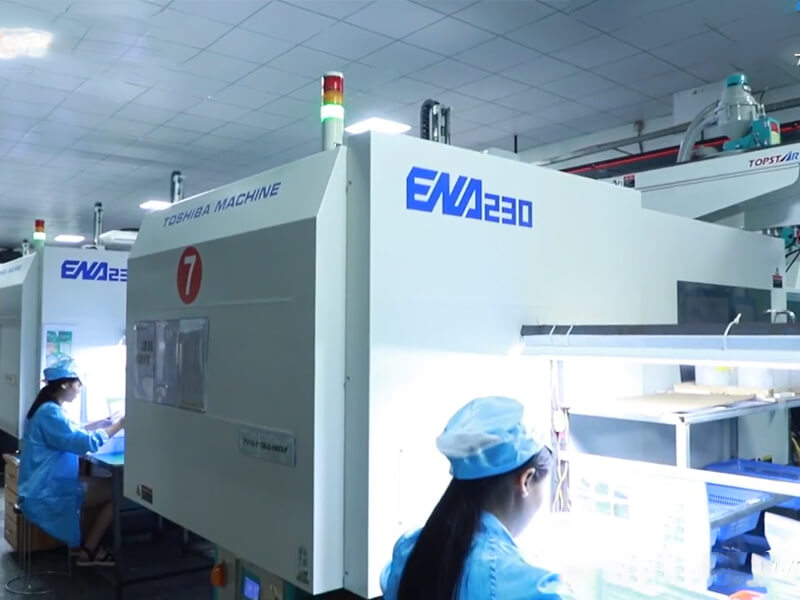
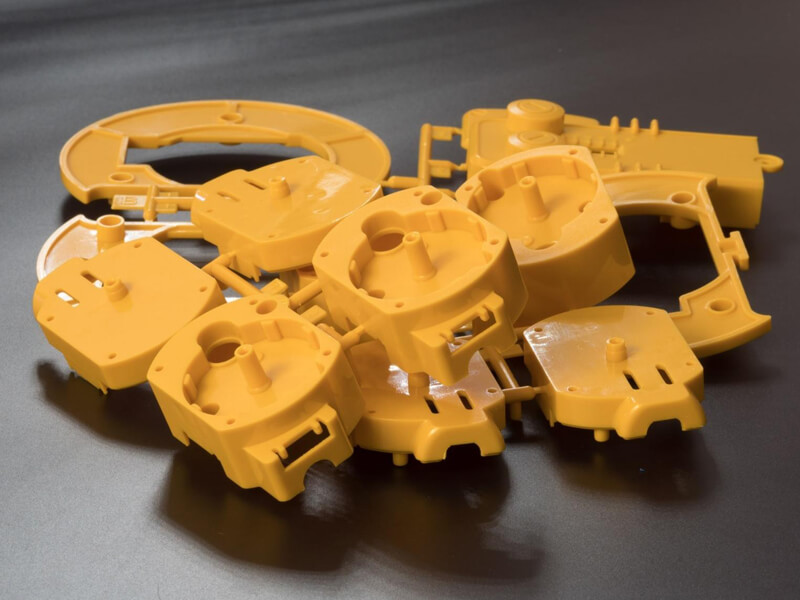
Get a free quote and design analysis today.
We’ll reply to you within 6 working hours.
We respect your privacy.
+86 139 2927 4777 (WhatsApp, Wechat)

